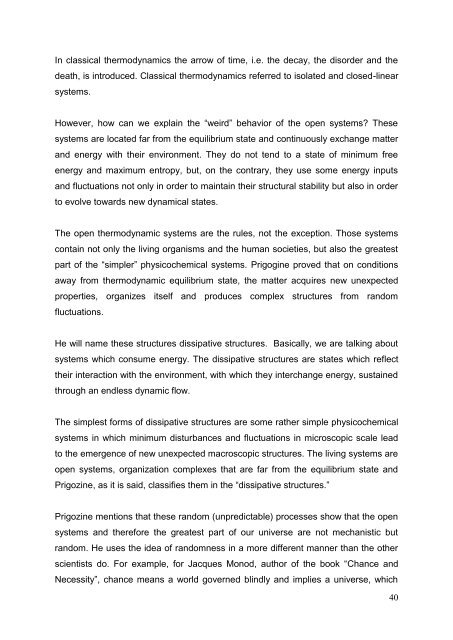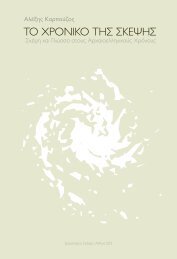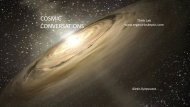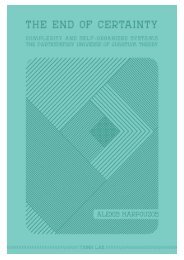COSMOLOGY, PHILOSOPHY AND PHYSICS -ALEXIS KARPOUZOS
The universe is not a world of separate things and events but is a cosmos that is connected, coherent, and bears a profound resemblance to the visions held in the earliest spiritual traditions in which the physical world and spiritual experience were both aspects of the same reality and man and the universe were one. The findings that justify this new vision of the underlying logic of the universe come from almost all of the empirical sciences: physics, cosmology, the life sciences, and consciousness research. They explain how interactions lead to interconnections that produce instantaneous and multifaceted coherence–what happens to one part also happens to the other parts, and hence to the system as a whole. The sense of sacred oneness experienced by our ancestors that was displaced by the unyielding material presumptions of modern science can be restored, and humanity can once again feel at home in the universe.
The universe is not a world of separate things and events but is a cosmos that is connected, coherent, and bears a profound resemblance to the visions held in the earliest spiritual traditions in which the physical world and spiritual experience were both aspects of the same reality and man and the universe were one. The findings that justify this new vision of the underlying logic of the universe come from almost all of the empirical sciences: physics, cosmology, the life sciences, and consciousness research. They explain how interactions lead to interconnections that produce instantaneous and multifaceted coherence–what happens to one part also happens to the other parts, and hence to the system as a whole. The sense of sacred oneness experienced by our ancestors that was displaced by the unyielding material presumptions of modern science can be restored, and humanity can once again feel at home in the universe.
You also want an ePaper? Increase the reach of your titles
YUMPU automatically turns print PDFs into web optimized ePapers that Google loves.
In classical thermodynamics the arrow of time, i.e. the decay, the disorder and the<br />
death, is introduced. Classical thermodynamics referred to isolated and closed-linear<br />
systems.<br />
However, how can we explain the “weird” behavior of the open systems? These<br />
systems are located far from the equilibrium state and continuously exchange matter<br />
and energy with their environment. They do not tend to a state of minimum free<br />
energy and maximum entropy, but, on the contrary, they use some energy inputs<br />
and fluctuations not only in order to maintain their structural stability but also in order<br />
to evolve towards new dynamical states.<br />
The open thermodynamic systems are the rules, not the exception. Those systems<br />
contain not only the living organisms and the human societies, but also the greatest<br />
part of the “simpler” physicochemical systems. Prigogine proved that on conditions<br />
away from thermodynamic equilibrium state, the matter acquires new unexpected<br />
properties, organizes itself and produces complex structures from random<br />
fluctuations.<br />
He will name these structures dissipative structures. Basically, we are talking about<br />
systems which consume energy. The dissipative structures are states which reflect<br />
their interaction with the environment, with which they interchange energy, sustained<br />
through an endless dynamic flow.<br />
The simplest forms of dissipative structures are some rather simple physicochemical<br />
systems in which minimum disturbances and fluctuations in microscopic scale lead<br />
to the emergence of new unexpected macroscopic structures. The living systems are<br />
open systems, organization complexes that are far from the equilibrium state and<br />
Prigozine, as it is said, classifies them in the “dissipative structures.”<br />
Prigozine mentions that these random (unpredictable) processes show that the open<br />
systems and therefore the greatest part of our universe are not mechanistic but<br />
random. He uses the idea of randomness in a more different manner than the other<br />
scientists do. For example, for Jacques Monod, author of the book “Chance and<br />
Necessity”, chance means a world governed blindly and implies a universe, which<br />
40









